Understanding Fall Clearance
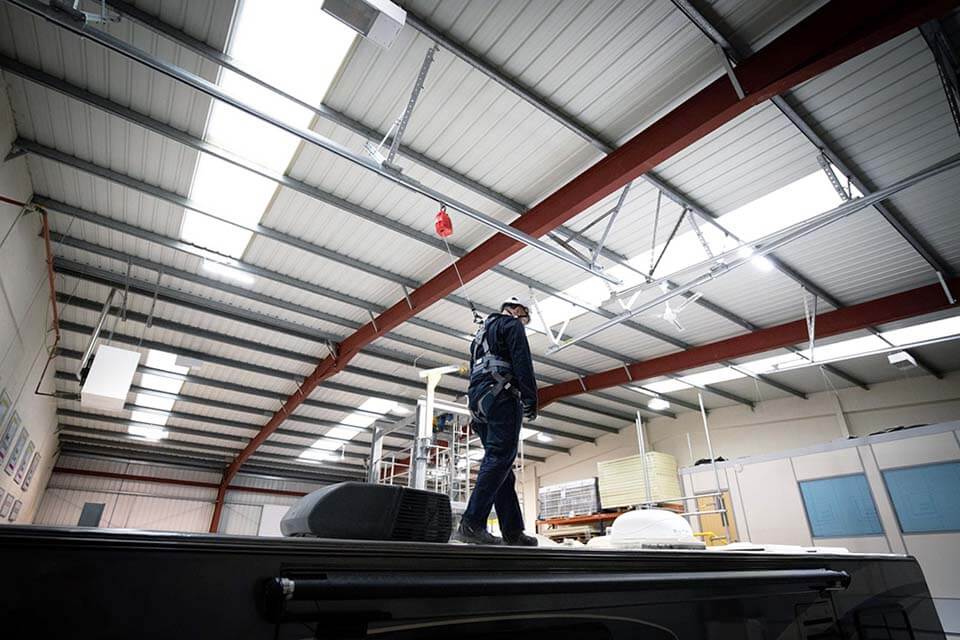
Calculating fall clearance is not as simple as some may lead you to believe. If done incorrectly, anyone who uses the system could be at risk of severe injury or death.
Having a basic understanding of how to calculate fall clearance will help you know when to hire a qualified person and when to find a different solution. If you can easily tell that you don’t have enough clearance, then you can spend your time on finding a solution that will keep people safe.
Before we jump into the details, I want to make sure that you understand that it is critical that all personal fall arrest systems are designed, installed, and used under the supervision of a qualified person.
If you need a refresher on what makes a person a qualified person, please refer to our other article covering the definition of a qualified person.
Now that we have that out of the way, let’s review what we’re going to cover in this article.
- 4 Things to Consider Before You Calculate Fall Clearance
- The Fall Clearance Calculation Formula
- Example 1: Calculating Fall Clearance on a Roof
- Example 2: Calculating Fall Clearance on a Bus
4 Things to Consider Before You Calculate Fall Clearance
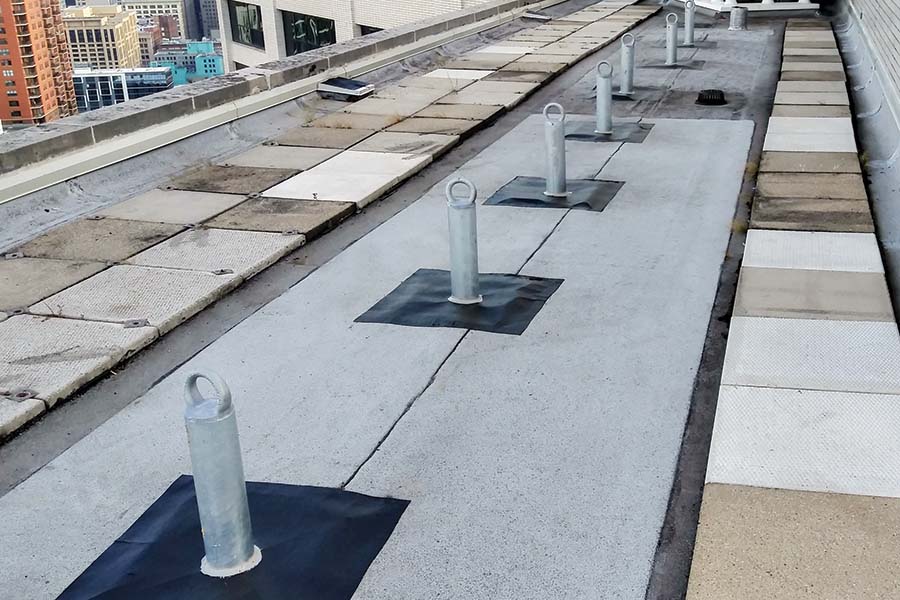
Identify the type of anchor being used
It is important to understand what type of anchor you are connecting to. The two terms to consider are rigid and flexible. A rigid anchor has minimal deflection in the event of a fall. This deflection is small enough to not be included in the calculation (in most cases). Vertical and Horizontal wire lifelines are examples of flexible anchors. These are designed to deflect or stretch and will need to be included in the fall clearance calculation.
Consider the protective equipment being used
Each piece of personal fall protection equipment can have different amounts of stretch when a load is applied. For instance, some lanyards will need 3-4' of stretch, whereas some self-retracting lifelines will only need 18 inches.
Understand the work being done
The job that the user will be performing will impact how you calculate your fall clearance. For example, working on an HVAC unit that sits 1 foot away from the roof edge vs. working on an HVAC unit that sits 6 feet away from the roof edge may change where their anchor point is located and how long their lanyard needs to be.
Verify the field conditions
Put “eyes on” the environment and verify if your available fall clearance is always the same, or if it can change. This consideration is especially important when working with horizontal lifelines but may apply even to a single anchor point.
Some questions to ask:
- Will the fall clearance change because of building additions, trees, or change in elevation?
- Are there trucks that will pull into a dock below where the user will be?
- Will the user need to climb over obstacles like ductwork or conveyor belts?
All these variables can affect how the fall clearance needs will change. It is important to inspect the work area and any area the user can gain access to while using the fall arrest system.
The Fall Clearance Calculation Formula
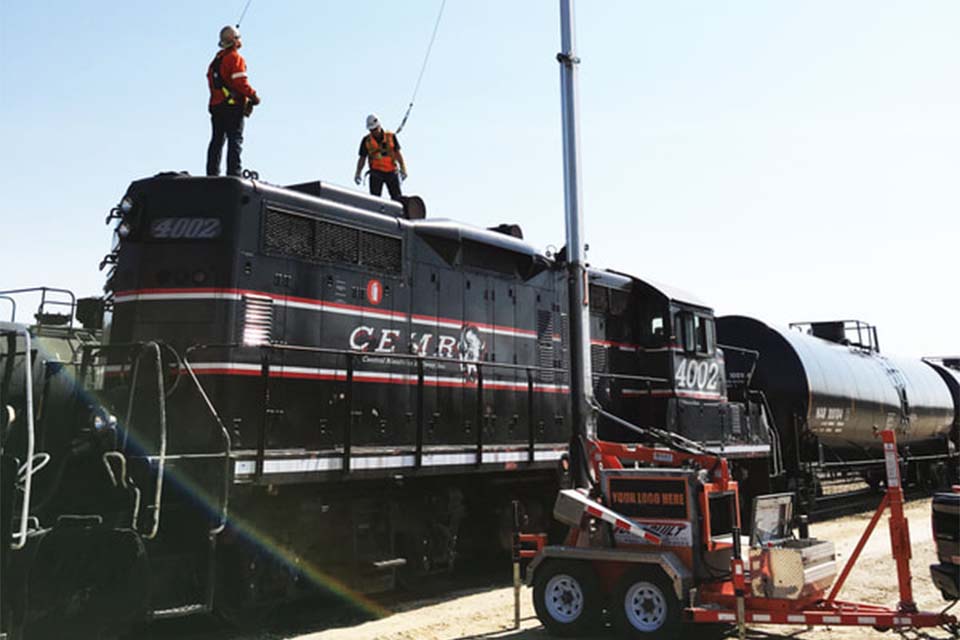
To understand the needed fall clearance, add the following together:
- Free fall distance: this is the combination of the following:
- Any slack in your lanyard. You can think of this as a worker’s free-fall distance once they are level with the working surface. For overhead anchors, this can be immediate or within inches. For foot-level anchors, this could be several feet into an active fall.
- How far it takes for the system to activate. This is most common with self-retracting lifelines and vertical lifelines. A class A SRL will take up to 2 feet before it activates. A vertical lifeline will take a few inches before the rope grab engages with the rope.
- Any sag in a horizontal lifeline (if applicable).
- Deceleration distance: A personal fall arrest system needs to arrest a fall in such a way that it does not put too much stress on the worker. Because of this, there is typically a shock pack or other means of slowing down a fall more gradually than a sudden stop. The deceleration distance includes:
- How far the lanyard stretches. This will depend on the lanyard that you use and should be determined by the manufacturer.
- The maximum distance an anchor may deflect. With rigid anchors, this is minimal, often ranging between half an inch and three inches.
- How far a personal energy absorber deploys. This is typically a shock pack and OSHA says that this should not exceed 42 inches.
- Swing fall distance: sometimes a fall can occur when a worker is not perfectly perpendicular to the edge. When this happens, they may swing until the lanyard is perpendicular. Although typically a minor addition, this can add to the required clearance and should be considered.
- Stretch out distance: this is the lengthening and straightening of the user’s body and the stretching of the harness. Typically, the stretch of the harness will add 1 foot to the calculation. The height of the user is the difference between the d-ring and the sole of the user’s feet. This is typically 5 feet for a 6-foot-tall person.
- Safety factor is the margin of clearance required between the user and the closest lower level after the fall has been arrested. Generally, you will want to add 2’ for a safety factor
ANSI provides more information on the calculations that your qualified person should be familiar with.
Example 1: Calculating Fall Clearance on a Roof
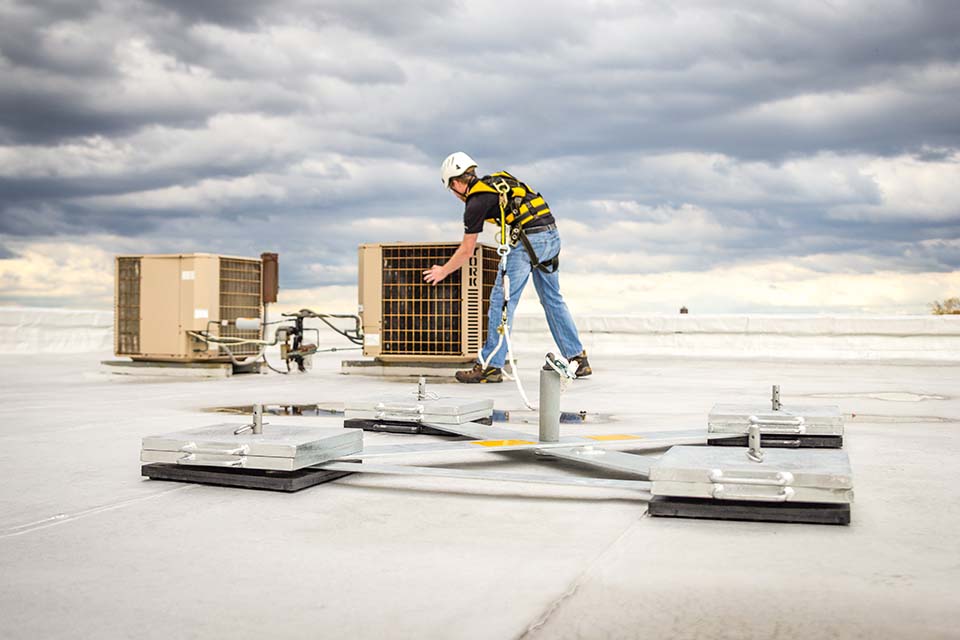
Luke finds himself needing to work on a camera at the edge of a building where a fixed anchor is already in place. The anchor will be 6 feet from the roof edge and the lanyard that Luke uses will be 6 feet long. Let’s run through the formula above to find out how much clearance Luke needs to be safe.
First, we figure out how much he will free fall below the working surface. The lanyard slack is going to be the difference between the length of the lanyard and the distance between the anchor and the edge where the fall will occur. In this case, the lanyard slack is 0 feet. There is no activation distance because the lanyard is a fixed length. There is no horizontal lifeline sag because we are working with a fixed anchor. So, the total free fall will be 0 feet.
Remember that free fall in this instance only references the distance below the surface. The user would actually free fall for 5’, which is the height of the d-ring above the walking surface plus the slack in the lanyard.
The deceleration distance is going to depend on the equipment that you use. The manufacturer will let you know what the lanyard stretch and energy deployment length will be. In this example, Luke is using a lanyard with a total deceleration distance of three and a half feet. The anchor deflection is so minimal (half an inch) that we won’t include it in this example.
The stretch out would include an assumed harness stretch of 12 inches, like the lanyard stretch above, and the 5-foot height of the user based on the position of his d-ring to the bottom of his feet. 1 foot + 5 feet = 6 feet.
There is no swing fall hazard in this situation. Then, we just need to add the standard 2-foot clearance margin for the safety factor.
The total fall clearance that Luke needs to be safe on this roof is 0’ + 3’ 6” + 6’ + 0 + 2’ = 11 feet and 6 inches. In this case, the building is 24 feet in height with no obstructions to worry about below. Luke’s boss can now consult a qualified person to design the personal fall protection system here.
Example 2: Calculating Fall Clearance on a Bus
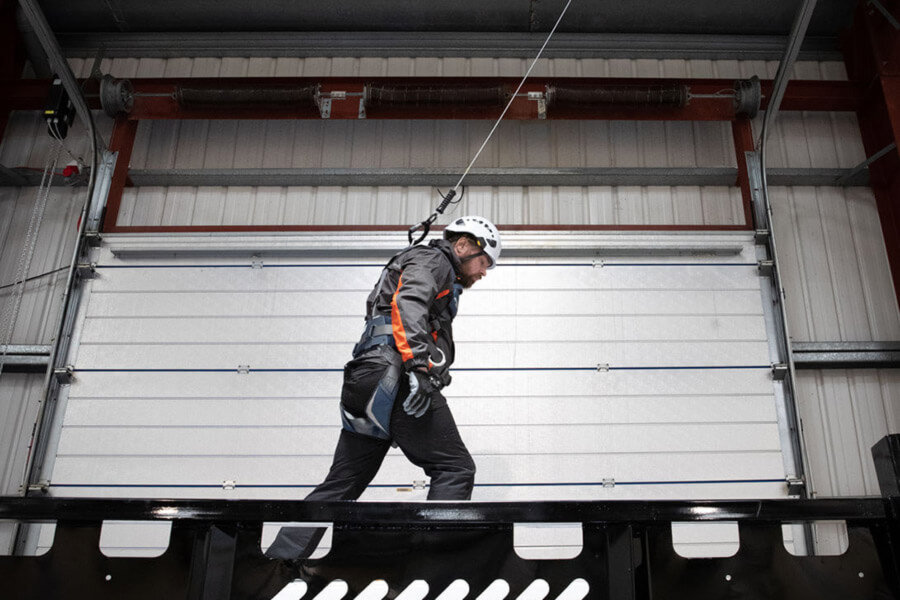
Luke has successfully and safely fixed the camera on the roof. Now, he needs to do some work on the bus in his depot. The bus is 8 feet wide and 10 feet tall. The depot has installed a rigid overhead lifeline system that has an anchor height of 7 feet above the bus roof surface. Again, Luke will be using a 6-foot lanyard. It’s time to see if Luke has enough fall clearance.
The free fall here can be a little confusing and you could use your high school algebra to help you if you want. Because the anchor is above Luke’s d-ring, we can’t just calculate for the horizontal clearance. However, the height of the anchor above the surface is greater than the lanyard length. It’s a wise practice to not use negative numbers in the calculation unless you’re qualified to do so. In this case, we’ll use 0 feet for the fall clearance again.
The deceleration device, stretch out and safety factor will be the same as above. You can skip the next couple of paragraphs if you’ve already read them.
The deceleration distance is going to depend on the equipment that you use. The manufacturer will let you know what the lanyard stretch, and energy deployment length will be. In this example, Luke is using a lanyard with a total deceleration distance of three and a half feet. The anchor deflection is so minimal (half an inch) that we won’t include it in this example.
The stretch out would include an assumed harness stretch of 12 inches, like the lanyard stretch above, and the 5-foot height of the user based on the position of his d-ring to the bottom of his feet. 1 foot + 5 feet = 6 feet.
There is no swing fall hazard in this situation. Then, we just need to add the standard 2-foot clearance margin for the safety factor.
In this case, the total fall clearance is the same as the roof above. 12 feet and 9 inches is not enough clearance for the bus. The good news is that a qualified person may be able to find an alternative solution. For instance, swapping out the lanyard for a self-retracting lifeline would change the calculation in Luke’s favor.
Wrapping Up
Now that you have an idea of how to think about fall clearance, I hope you can see the value of a qualified person being involved.
If you’re still not sure what to do or if a fall arrest system is a good option for you, reach out to one of our safety experts. They will happily work through your specific application to help you find the right solution.



